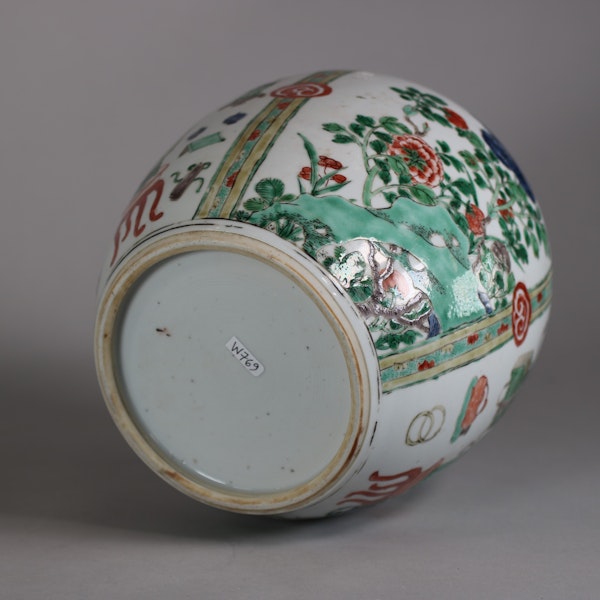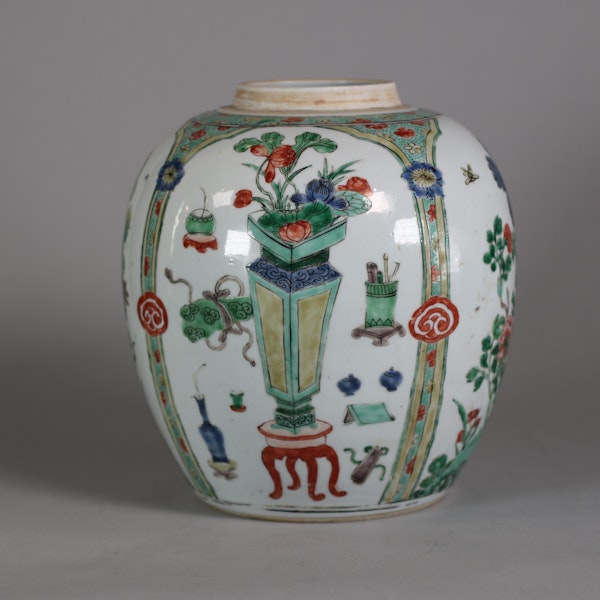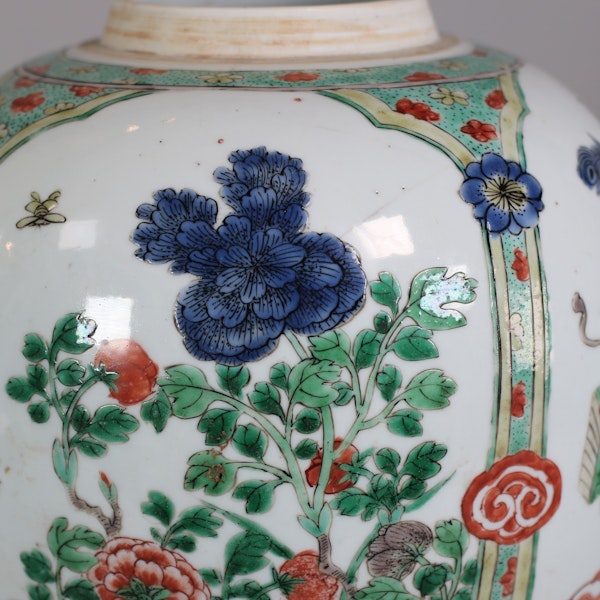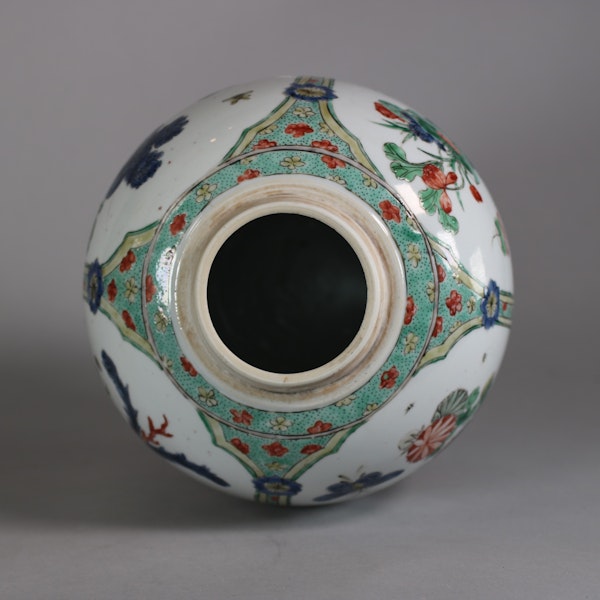Chinese famille verte ‘hundred antiques’ jar, Kangxi (1662-1722)
Chinese famille verte ‘hundred antiques’ jar, Kangxi (1662-1722)
POA
Description
Chinese famille verte ‘hundred antiques’ jar, Kangxi (1662-1722), decorated with four scalloped panels against a green stippled ground strewn with flowerheads, with yellow borders and red ruyi-heads, containing an archaic-form vessel upon a four-legged stool containing a stick of red coral and two feathers, surrounded by other antiques including incense burners, scrolls bound in ribbon and another vase containing coral and a flywhisk; chrysanthemum issuing from rockwork with a butterfly and other insects overhead; lotus growing in a jardiniere of archaic-form upon a four-legged stool and surrounded further antiques; and tree peony issuing from rockwork with a small insect in flight overhead.
Height: 18.5cm. (7 1/4in.)
Condition: Faint hair-line on shoulder that may not go through; please refer to image
Notes:
The hundred antiques are a collection of symbolic items combining scholarly objects with auspicious Buddhist emblems. The motif became popular from the beginning of the Kangxi period due to its association with the gentleman collector, good taste and learning. Meanwhile, the flowers contained in the other panels comprise three of the four ‘flowers of the seasons’: peony (spring); lotus (summer) and chrysanthemum (autumn). The unfolding of the four seasons is a celebrated theme in Chinese art, and seasonal flowers are often used to represent the passing of time. It is possible that in this case prunus, the fourth flower representing winter, was omitted from the design in favour of more appropriate symbols of scholarship deliberately to avoid any reference to old age and death. Longevity was a particular preoccupation of Daoism, with symbols and figures associated with long life frequently appearing in art and ceramic design during this period while any references to human mortality were not considered auspicious.
| item details | |
|---|---|
| Material and Technique | Porcelain with overglaze enamel decoration in the famille verte palette |
| Origin | Chinese |
| Period | 17th Century |
| Condition | Very good |
| Dimensions | Height: 18.5cm. (7 1/4in.) |
Product REF: W769












